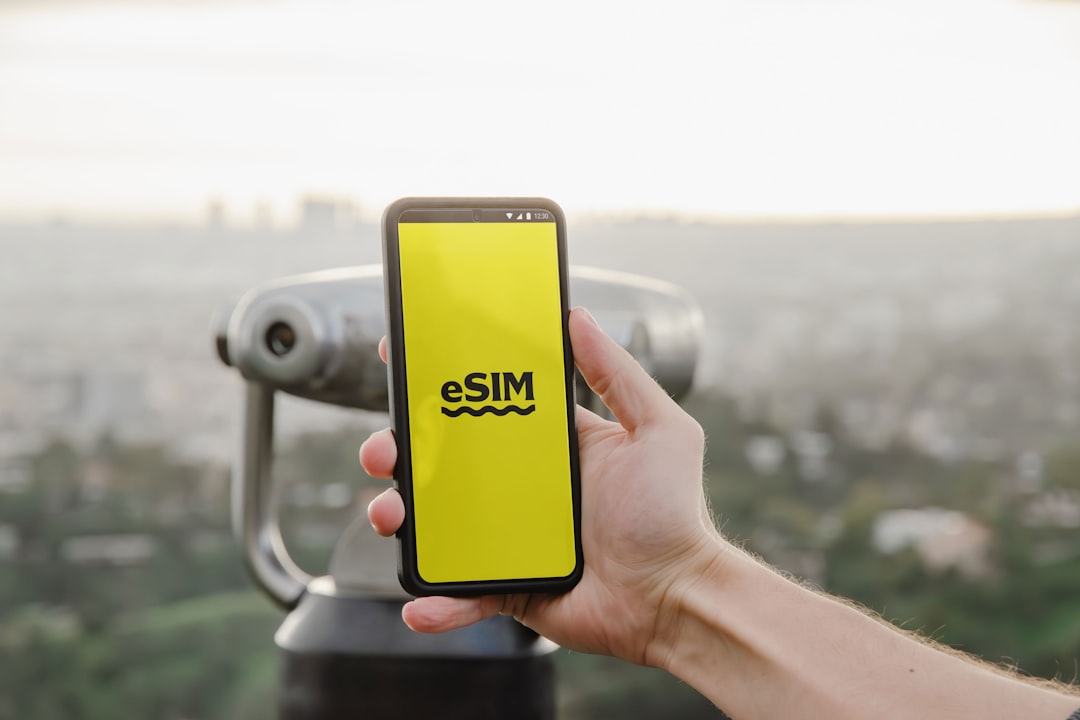Step by Step Roadmap to Becoming a Fulltime Nomad

Introduction
The idea of living a location‑independent lifestyle has moved from a niche dream to a realistic option for thousands of people each year. A full‑time nomad is someone who earns a living while constantly moving, whether that means hopping between countries, exploring different regions of a single nation, or traveling in a van across the continent. The freedom is intoxicating, but the transition from a conventional 9‑to‑5 job to a nomadic existence requires careful planning, reliable resources, and a clear roadmap.
This guide walks you through every major milestone, from assessing whether a nomadic life fits your personality to setting up the practical systems that keep you productive on the road. Follow the steps in order, adapt the advice to your own circumstances, and you’ll be equipped to launch a sustainable, enjoyable nomadic career.
Self‑Assessment
Clarify Your Motivation
- Adventure vs. Escape – Are you drawn to new cultures, scenery, and experiences, or are you trying to run away from something that isn’t working? Understanding the core driver helps you stay focused when challenges arise.
- Financial Independence – Do you need a steady income to cover rent, travel, insurance, and leisure? Identify the minimum monthly amount you must earn to feel secure.
- Lifestyle Preferences – Some nomads love the fast pace of city hopping, others prefer slow travel, staying months in one place. Pinpoint which rhythm feels natural to you.
Evaluate Skills and Income Potential
| Skillset | Remote‑Friendly Jobs | Typical Income Range (USD) |
|---|---|---|
| Writing & Editing | Content creation, copywriting, technical writing | 2,000 – 8,000 |
| Design | UI/UX, graphic design, illustration | 2,500 – 9,000 |
| Development | Web development, SaaS, app development | 3,000 – 12,000 |
| Marketing | SEO, email campaigns, social media management | 2,500 – 7,000 |
| Consulting | Business, finance, HR, niche industry expertise | 3,000 – 10,000 |
| Teaching | Online language tutoring, course creation | 1,500 – 5,000 |
If your current role is not remote‑friendly, consider upskilling before you quit. Platforms such as Coursera, Udemy, and freeCodeCamp offer pathways to acquire marketable digital skills.
Test the Remote Work Model
- Freelance a Few Hours a Week – Take on small projects while still employed. This gives you a taste of client communication, invoicing, and time management.
- Remote Side Hustle – Start a blog, sell digital products, or manage a dropshipping store. Measure the consistency of income and the time required.
- Trial Period – Request a remote or hybrid arrangement from your current employer for 1‑3 months. Observe how productivity and work‑life balance shift.
Financial Foundations
Build an Emergency Fund
- Target Amount – At least three to six months of living expenses, including travel, accommodation, insurance, and a buffer for unexpected visa fees.
- Separate Account – Keep this fund in a high‑yield savings account that you can access internationally, such as a multi‑currency account offered by Wise or Revolut.
Set Up Recurring Income
- Retainer Contracts – Secure monthly retainers with clients for steady cash flow.
- Subscription Services – Offer recurring value (e.g., membership sites, SaaS tools).
- Passive Income Streams – Affiliate marketing, royalties from e‑books, or dividend‑paying stocks can supplement active earnings.
Budget for a Nomadic Lifestyle
| Category | Monthly Estimate (USD) | Tips to Reduce Cost |
|---|---|---|
| Accommodation | 800 – 1,500 | Use long‑term Airbnb, house‑sitting, or co‑living spaces |
| Food | 300 – 600 | Cook at home, shop local markets, use meal‑prep |
| Transportation | 150 – 400 | Book flights in advance, use night buses, consider rail passes |
| Insurance | 50 – 150 | Choose comprehensive travel health plans with telemedicine |
| Tools & Subscriptions | 30 – 100 | Consolidate software, use free alternatives where possible |
| Miscellaneous | 100 – 300 | Budget for visas, activities, and unexpected fees |
Track expenses with tools like Notion, Toggl Plan, or a simple spreadsheet. Adjust your budget after the first month on the road to reflect real costs.
Legal and Administrative Preparation
Passport and Visa Strategy
- Passport Validity – Ensure at least six months of validity beyond your intended travel dates. Renew early; many countries reject entry if the passport expires too soon.
- Visa Research – Use resources such as the International Organization for Migration, visa‑specific forums, and government sites. Create a spreadsheet with columns for country, visa type, duration, cost, and application deadline.
- Digital Nomad Visas – Several countries now offer visas aimed at remote workers (e.g., Estonia, Barbados, Georgia). These often allow stays of 6‑12 months and may require proof of income.
Taxes
- Residency Rules – Determine where you will be considered a tax resident. Most countries use a 183‑day rule, but some have “statutory residency” based on ties.
- Home Country Obligations – If you retain citizenship, you may need to file annual returns even while abroad. Research foreign earned income exclusions (e.g., US FEIE) or tax treaties that prevent double taxation.
- Professional Advice – Consult a tax professional experienced with expatriate or digital nomad situations.
Banking and Money Transfer
- Multi‑Currency Accounts – Platforms like Wise, Revolut, and N26 allow you to hold, convert, and spend in dozens of currencies with low fees.
- Credit Cards – Choose cards with no foreign transaction fees, travel rewards, and robust fraud protection. Keep a backup card in a separate location.
- Cash Management – Carry a modest amount of local cash for places that don’t accept cards, but avoid large sums. Use ATMs for better exchange rates when possible.
Health and Safety
- Travel Health Insurance – Look for plans that cover medical emergencies, COVID‑19, evacuation, and telehealth. Companies such as World Nomads, SafetyWing, and IMG offer nomad‑focused policies.
- Vaccinations – Review the CDC or WHO recommendations for the regions you plan to visit. Some countries require proof of vaccination for entry.
- Local Laws – Familiarize yourself with cultural norms, legal restrictions (e.g., drug laws, photography bans), and emergency numbers for each destination.
Building a Remote‑Ready Career
Choosing the Right Income Model
- Freelancing – Flexibility to pick projects, but income can be variable. Build a strong portfolio and client pipeline.
- Remote Employment – Salary stability, benefits, and clearer work hours. Look for companies that support location independence.
- Entrepreneurship – Create a product or service that scales without your constant involvement. Requires upfront effort but can become fully passive.
Crafting a Professional Online Presence
- Portfolio Website – Use platforms like Webflow, Carrd, or Squarespace. Showcase case studies, client testimonials, and a clear value proposition.
- LinkedIn Optimization – Write a headline that emphasizes remote capability, list remote‑friendly skills, and engage in relevant groups.
- Personal Brand – Consistent visual style, tone, and messaging across social channels. Publish thought leadership pieces on Medium or industry blogs to attract clients.
Client Acquisition Strategies
- Job Boards – Remote‑only boards such as We Work Remotely, Remote OK, and AngelList. Set up email alerts for relevant postings.
- Cold Pitching – Identify businesses that could benefit from your services, craft personalized emails, and attach a brief proposal.
- Networking – Join digital nomad Slack communities, attend virtual conferences, and participate in local meetups when you arrive in a new city.
Managing Projects on the Road
- Time Zone Coordination – Use tools like World Time Buddy to schedule meetings that suit both you and clients.
- Task Management – Adopt a system such as Kanban (Trello, Asana) or a simple to‑do list in Notion.
- Communication – Keep a dedicated work email, use Slack or Microsoft Teams for instant messaging, and set expectations for response times.
Packing Essentials
Core Gear
- Laptop – Choose a lightweight, reliable model with a solid-state drive and at least 8 GB RAM. Consider a USB‑C hub for additional ports.
- Smartphone – Unlocked device that works with multiple carriers. Install a VPN for secure browsing on public Wi‑Fi.
- Power Solutions – Universal travel adapter, portable charger (20 000 mAh), and a compact solar panel if you’ll be off‑grid.
- Backpack vs. Suitcase – For frequent moves, a 40‑45 L travel backpack with a waterproof cover offers mobility. For longer stays in one place, a wheeled suitcase may be more comfortable.
Clothing Strategy
- Capsule Wardrobe – Stick to versatile pieces that mix and match. Include quick‑dry shirts, a lightweight jacket, and convertible pants.
- Layering – Pack items for various climates: base layers for cold, breathable fabrics for heat.
- Footwear – One pair of comfortable walking shoes, one pair of sandals or flip‑flops, and optionally a dressier option for meetings.
Travel‑Friendly Tools
- Noise‑Cancelling Headphones – Essential for focusing in noisy cafés or co‑working spaces.
- Portable Wi‑Fi Hotspot – A device like Skyroam or GlocalMe provides reliable internet where public networks are spotty.
- Travel Insurance Documents – Keep digital copies on a secure cloud drive and a printed version in a waterproof pouch.
Minimalist Packing Checklist
- Laptop, charger, mouse
- Smartphone, charger, SIM cards (local + backup)
- Universal adapter, power bank, travel router
- 5‑7 shirts, 2‑3 pairs of pants, 1 jacket, underwear, socks
- 1 pair walking shoes, 1 pair sandals
- Toiletries in travel‑size containers, quick‑dry towel
- Notebook, pens, reusable water bottle
- Travel documents (passport, visas, insurance, emergency contacts)
Remember the “one‑in, one‑out” rule: for every new item you bring, discard something else. This keeps your load manageable.
Choosing Your First Destination
Factors to Consider
- Cost of Living – Use Numbeo or Expatistan to compare average rent, food, and transportation costs.
- Internet Reliability – Look for cities with coworking spaces, cafés with strong Wi‑Fi, and mobile data coverage.
- Time Zone Compatibility – Align with the majority of your clients or team’s working hours.
- Visa Length – For beginners, a 30‑ to 90‑day tourist visa often suffices; longer stays may require a digital nomad visa.
- Community – Cities with an existing expat or nomad scene (e.g., Chiang Mai, Medellín, Lisbon) provide networking opportunities and social support.
Sample Starter Locations
| City | Approx. Monthly Cost (USD) | Internet Speed (Mbps) | Time Zone | Nomad Community |
|---|---|---|---|---|
| Chiang Mai, Thailand | 800 – 1,200 | 30 – 50 | GMT+7 | Large, active |
| Medellín, Colombia | 900 – 1,400 | 40 – 70 | GMT‑5 | Growing |
| Lisbon, Portugal | 1,400 – 2,200 | 70 – 120 | GMT+0 | Strong |
| Budapest, Hungary | 1,200 – 1,800 | 60 – 100 | GMT+1 | Vibrant |
| Tbilisi, Georgia | 700 – 1,100 | 30 – 60 | GMT+4 | Emerging |
Select a place that aligns with your budget and lifestyle preferences. Book accommodation for at least the first month to give yourself a buffer while you search for a longer‑term arrangement.
Settling In
Secure Stable Internet
- Co‑Working Spaces – Purchase a day pass or monthly membership. They often include high‑speed internet, printing, and a professional environment.
- Local SIM with Data – In many countries, a prepaid SIM offers generous data bundles at low cost. Test speeds before committing to a plan.
- Backup Options – Identify nearby cafés, libraries, or hotels that provide Wi‑Fi in case your primary connection fails.
Set Up a Productive Workspace
- Ergonomics – Use a portable laptop stand and external mouse to avoid strain.
- Lighting – Natural light is best; supplement with a compact LED lamp if needed.
- Noise Management – Noise‑cancelling headphones or a small portable white‑noise device help maintain focus.
Establish Routines
- Morning Ritual – Begin with a consistent activity (e.g., coffee, meditation, short walk) to signal the start of work.
- Work Blocks – Use the Pomodoro technique (25‑minute focus, 5‑minute break) to maintain momentum.
- Local Exploration – Schedule time after work to explore the city, attend language meetups, or try local cuisine.
Connect with Community
- Meetup Groups – Search on Meetup.com for “digital nomads”, “expats”, or industry‑specific gatherings.
- Co‑Living Spaces – Consider short‑term stays in co‑living houses that blend accommodation with a built‑in community.
- Online Forums – Participate in subreddits like r/digitalnomad, Facebook groups, and Discord servers.
Managing Finances on the Move
Tracking Income and Expenses
- Currency Conversion – Use the “auto‑convert” feature in your budgeting app to keep everything in a base currency.
- Invoice Management – Tools like FreshBooks, Invoice Ninja, or Wave let you create, send, and track invoices from any device.
- Tax Deductions – Keep receipts for travel‑related expenses that may qualify as business deductions (e.g., coworking fees, internet, equipment).
Dealing with Currency Fluctuations
- Hold Funds in Stable Currencies – Keep a portion of your cash in USD or EUR to protect against local devaluation.
- Strategic Transfers – Use Wise for low‑fee conversions and schedule transfers when rates are favorable.
Emergency Money Access
- Backup Card – Store a second credit or debit card in a separate bag or with a trusted friend.
- Digital Wallets – Apple Pay, Google Pay, and similar services can be used where contactless payments are accepted.
Maintaining Health and Well‑Being
Physical Health
- Exercise Routine – Use bodyweight workouts, resistance bands, or local gyms (many offer day passes).
- Movement Breaks – Stand, stretch, or take short walks every hour to avoid sedentary strain.
- Nutrition – Balance local street food with home‑cooked meals; incorporate fruits, vegetables, and protein sources.
Mental Health
- Digital Boundaries – Set “offline” hours to prevent burnout, especially when time zones overlap.
- Social Support – Stay in touch with family and friends via scheduled video calls.
- Mindfulness Practices – Meditation apps (Insight Timer, Calm) can help manage stress and maintain focus.
Medical Care
- Local Clinics – Identify reputable clinics or hospitals near your accommodation.
- Telemedicine – Many travel insurance plans include virtual doctor visits, useful for minor ailments.
Scaling and Long‑Term Sustainability
Diversifying Income
- Add New Services – If you are a writer, consider offering editing or content strategy.
- Create Digital Products – E‑books, templates, or online courses can generate passive revenue.
- Affiliate Partnerships – Promote tools you use (e.g., VPNs, coworking spaces) and earn commissions.
Building a Personal Brand
- Content Calendar – Publish regular blog posts, newsletters, or YouTube videos that showcase expertise.
- Guest Appearances – Appear on podcasts, webinars, or industry panels to expand visibility.
- Testimonials – Collect and display client feedback to reinforce credibility.
Automating Administrative Tasks
- Invoicing Automation – Set recurring invoices for retainer clients.
- Expense Reporting – Use receipt‑scanning apps that sync with accounting software.
- Email Filters – Create rules that sort client communications into dedicated folders.
Planning Future Moves
- Visa Calendar – Map out expiration dates, application windows, and required documents for each country you plan to visit.
- Seasonal Considerations – Align travel with favorable weather, lower tourist crowds, and off‑peak pricing.
- Community Hubs – Identify recurring “base cities” where you can return periodically for networking and recharging.
Common Challenges and How to Overcome Them
Loneliness
- Solution – Join co‑living houses, schedule regular video calls, and attend local events. Volunteering for community projects can also foster connections.
Unstable Income
- Solution – Build a buffer of three months’ worth of earnings, diversify client base, and create recurring revenue streams.
Internet Outages
- Solution – Keep a portable hotspot, download offline work files, and have a list of backup cafés or coworking spaces.
Visa Issues
- Solution – Keep a master spreadsheet of visa requirements, set reminders for renewal dates, and consider working with a visa‑specialist service for complex applications.
Time Zone Fatigue
- Solution – Negotiate core‑hour overlap with clients, batch communication to specific times, and use “do not disturb” mode during personal hours.
Tools and Resources Checklist
Productivity
- Notion – All‑in‑one workspace for notes, tasks, and databases.
- Trello or Asana – Visual project boards.
- Toggl Track – Time tracking for billing and productivity analysis.
Communication
- Slack – Instant messaging with channels.
- Zoom – Video conferencing.
- Calendly – Automated meeting scheduling across time zones.
Finance
- Wise – Low‑fee multi‑currency accounts and transfers.
- Revolut – Banking, budgeting, and crypto options.
- FreshBooks – Invoicing and expense management.
Travel
- Skyscanner – Flight price comparison.
- Airbnb – Short‑term rentals.
- Hostelworld – Budget accommodations.
Community
- Nomad List – City rankings, cost of living, and community reviews.
- Remote Work Hub – Job listings and resources.
- r/digitalnomad – Reddit community for advice and stories.
Sample 12‑Month Roadmap
| Month | Goal | Key Actions |
|---|---|---|
| 1–2 | Validate Remote Income | Freelance 10‑15 hrs/week, secure first retainer, build emergency fund |
| 3 | First Destination Move | Choose city based on cost and internet, arrange 1‑month accommodation, set up local SIM |
| 4–5 | Stabilize Routine | Join coworking space, sign long‑term client contract, refine productivity system |
| 6 | Diversify Income | Launch a digital product (e.g., template, guide), start affiliate program |
| 7 | Apply for Digital Nomad Visa | Research requirements, gather documents, submit application |
| 8–9 | Expand Network | Attend regional meetups, speak at a local event, collaborate on a project |
| 10 | Review Finances | Analyze income streams, adjust rates, allocate savings for next move |
| 11 | Plan Next Destination | Evaluate visa options, cost of living, and community; book travel |
| 12 | Reflect & Adjust | Conduct a personal review, set goals for the next year, celebrate milestones |
Adjust the timeline to match personal circumstances, but maintaining a structured plan helps prevent drift and keeps momentum.
Final Thoughts
Transitioning to a full‑time nomadic lifestyle is a marathon, not a sprint. The most successful nomads blend solid financial preparation, reliable remote work systems, and an adaptable mindset. By following the step‑by‑step roadmap outlined above—starting with honest self‑assessment, building a resilient income, mastering legal and logistical details, and continually refining your workflow—you can create a sustainable, enriching life on the move.
Remember that challenges will appear, but each obstacle is an opportunity to learn a new skill, strengthen a habit, or discover a hidden gem of a destination. Embrace the journey, stay organized, and let the world become both your office and your playground. Safe travels!
Random Posts

The Ultimate Nomad Packing Guide and Starter Resources
Discover how to pack light and smart for a location-independent life. This guide reveals the mindset, essential items and free resources that let you travel organized, cost effective and stress free.
2 months ago

Spain Digital Nomad Visa Guide for Remote Workers
Discover how to live and work in Spain with the new Digital Nomad Visa. This guide covers eligibility, application steps, lifestyle perks, and tips to settle smoothly as a remote professional
3 weeks ago

Boost Remote Productivity With a Smart Home Office Setup
Transform your remote work space with smart tech, ergonomic gear and smart layout tips that cut distractions, improve focus, and boost productivity and wellbeing in any size home office.
1 month ago

Lisbon to Tallinn A Nomad’s Guide to Europe
From sunny Lisbon’s affordable coworking scene to Tallinn’s medieval charm and booming tech hub, this guide maps the perfect nomad route, travel tips and essential info for a smooth, productive European adventure.
1 month ago

Streamlined Communication Hacks For Distributed Teams
Discover quick, low-effort hacks that cut meeting overload, unify chat, and sharpen documentation for distributed teams. Adopt an async-first mindset and boost collaboration across time zones.
4 weeks ago
Latest Posts

Essential Software Every Remote Professional Should Use
Master remote work with essential tools: instant messaging like Slack, high definition video calls such as Zoom, and asynchronous voice apps. Streamline communication, stay connected and boost productivity.
1 day ago

Mastering Remote Work Productivity for Digital Nomads and Freelancers
Learn proven habits, tools, and tactics that help digital nomads and freelancers stay focused, deliver quality work, and maintain a sustainable lifestyle while traveling the world.
1 day ago

Tech‑Friendly European Towns Perfect for Remote Living
Discover Europe’s best small towns where fast internet, affordable living and vibrant tech communities let you work remotely while soaking up historic charm, lakeside views or mountain air.
1 day ago